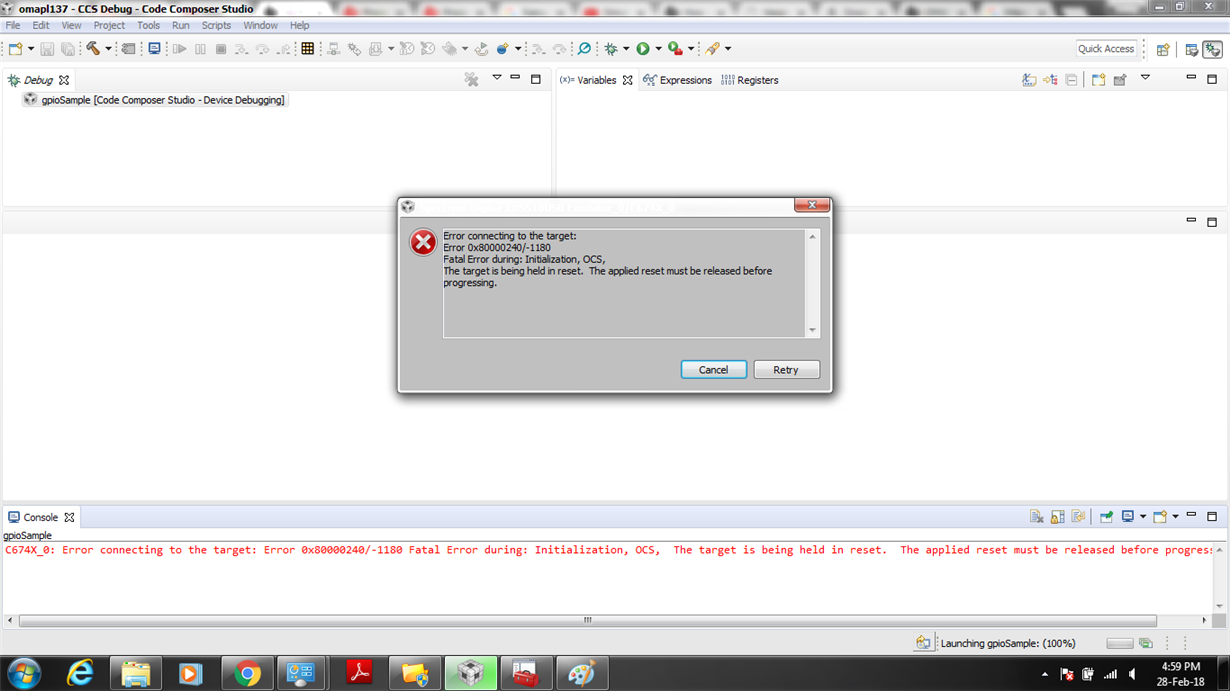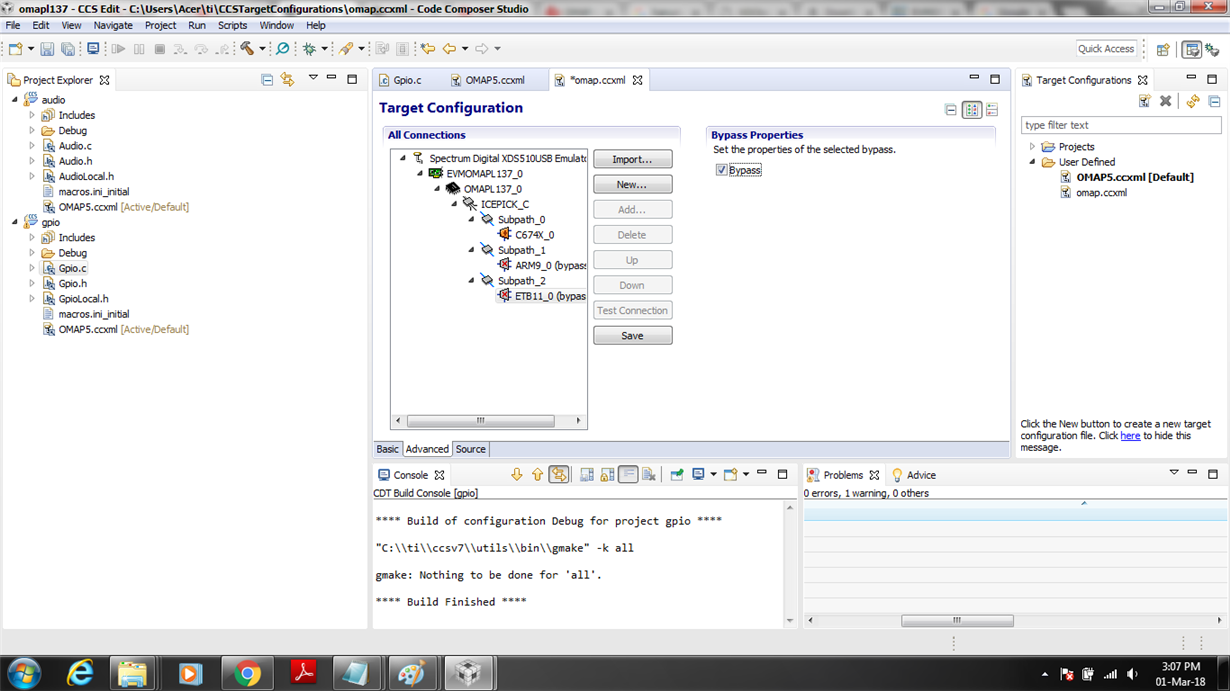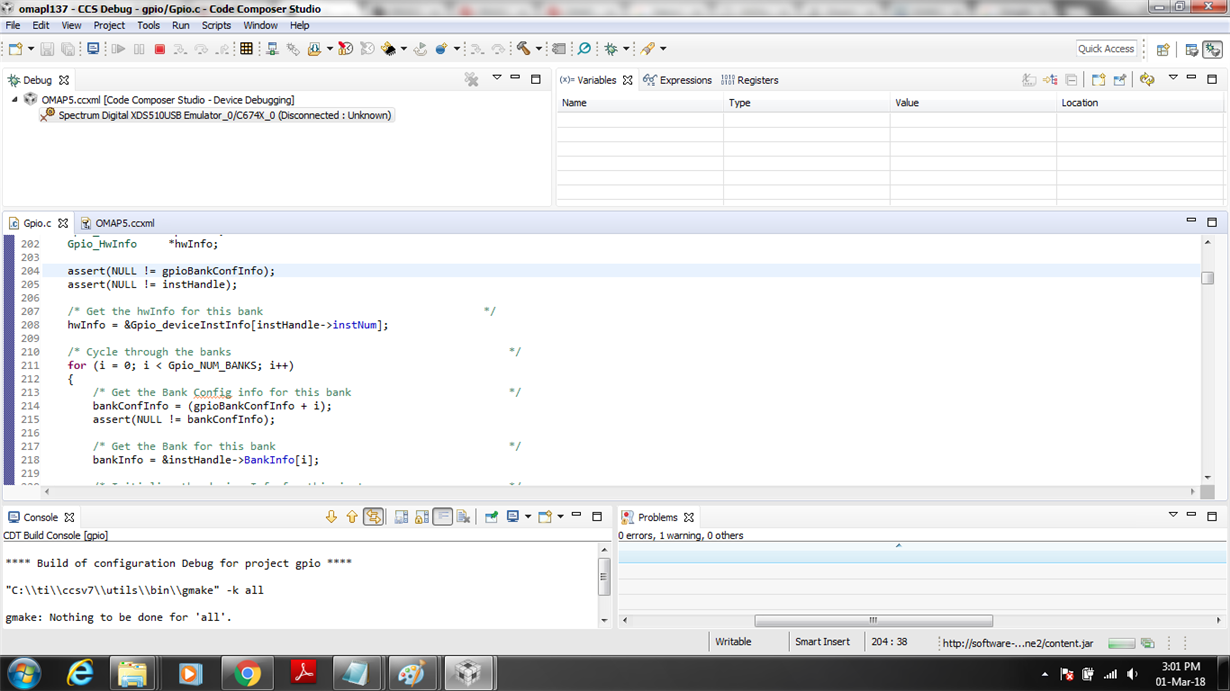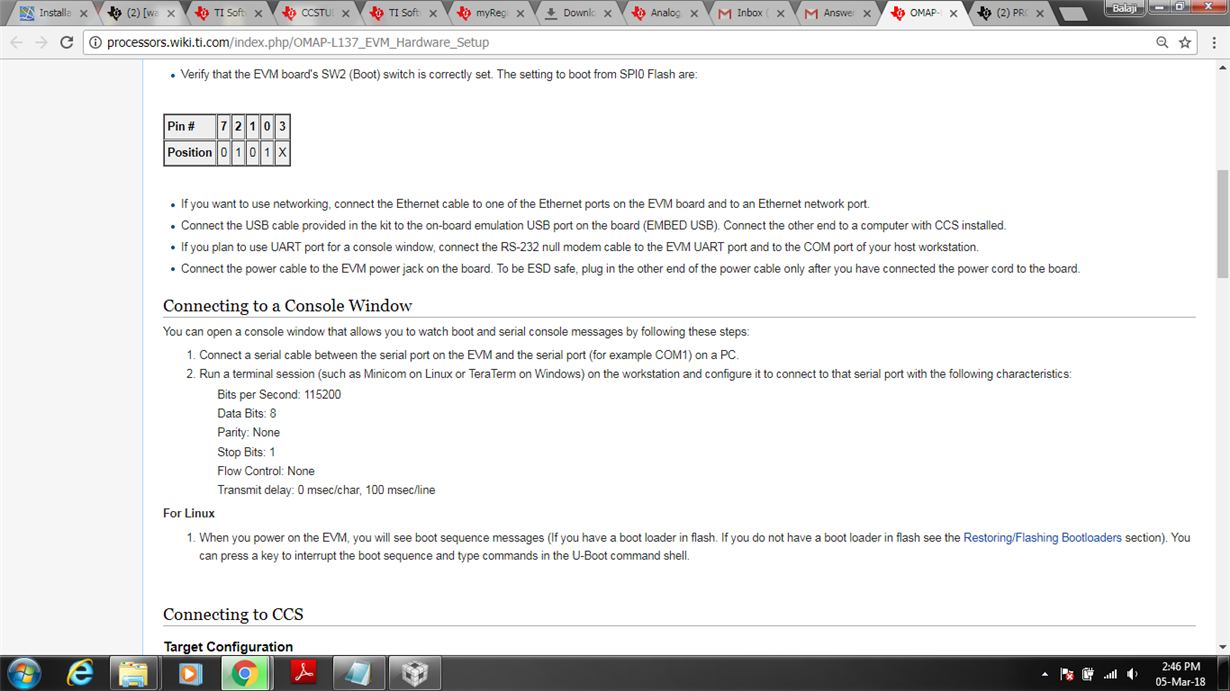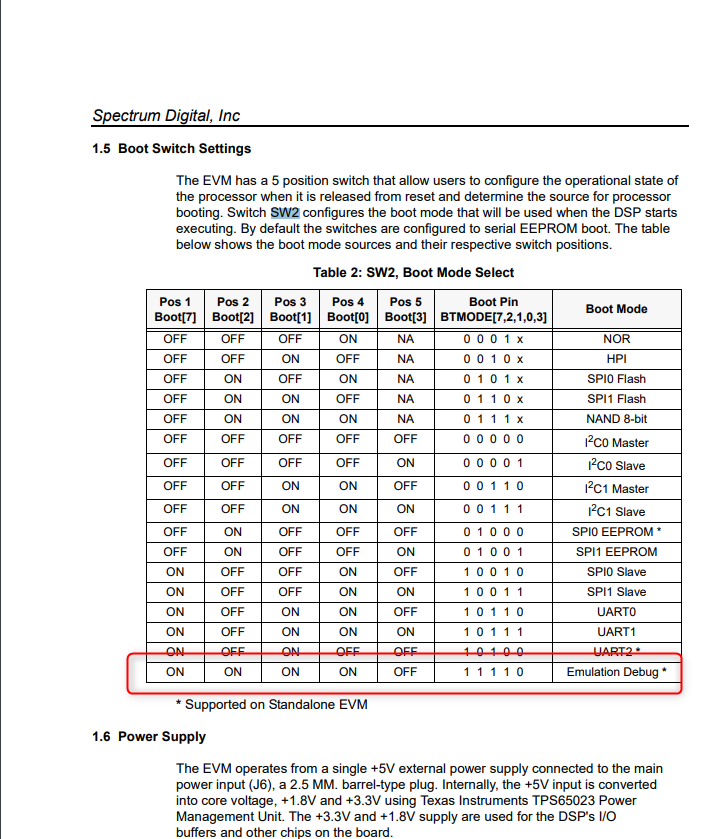Other Parts Discussed in Thread: OMAP-L137
Hello everyone,
I have OMAP-L137 EVM. I want to work in this kit with ccs version 6 or 7.
1)Kindly share the examples and all the requirements which I need to work in this board.
2)Secondly how to connect this board with the pc/laptop? because I got one mini usb cable and one micro usb cable. So which one should I connect to the pc/laptop?


